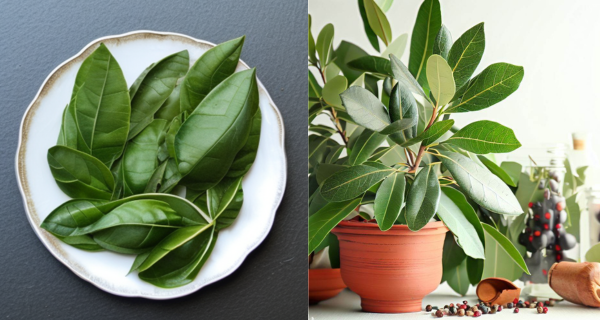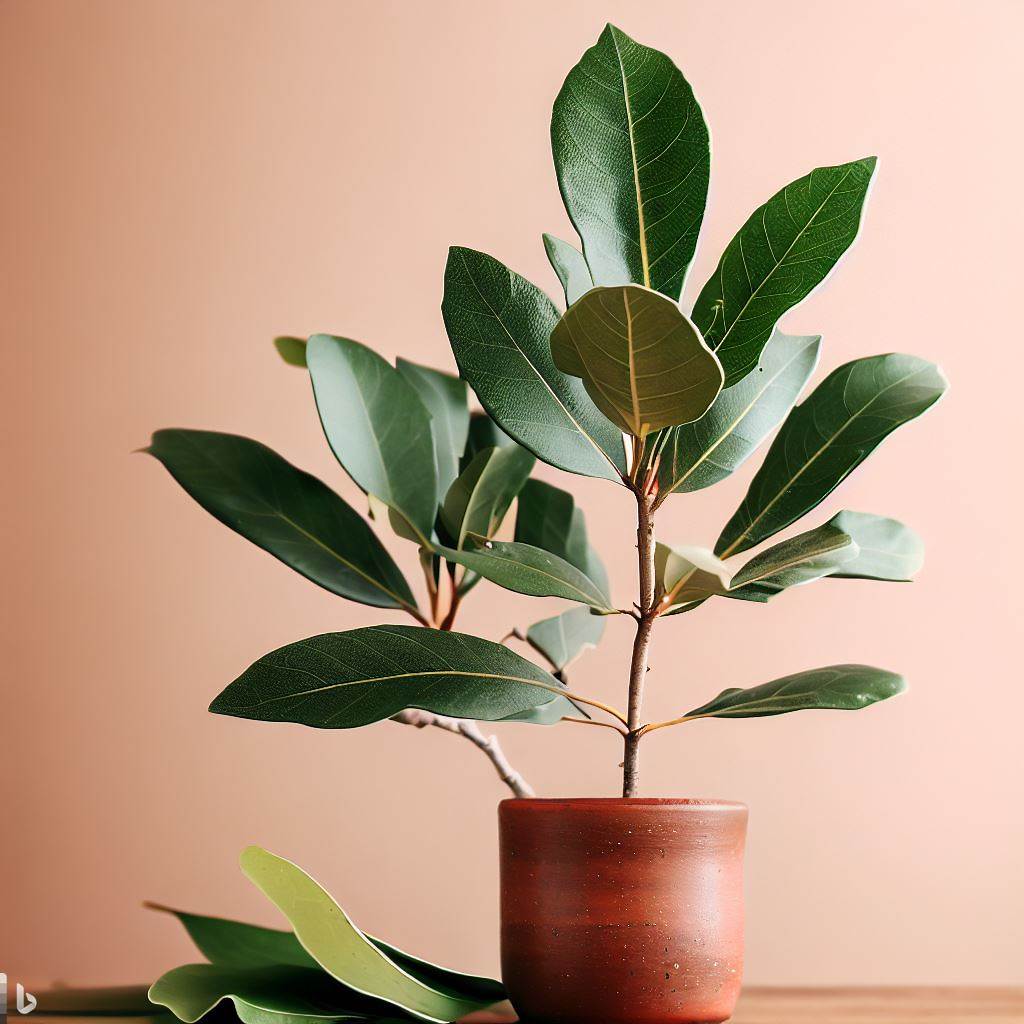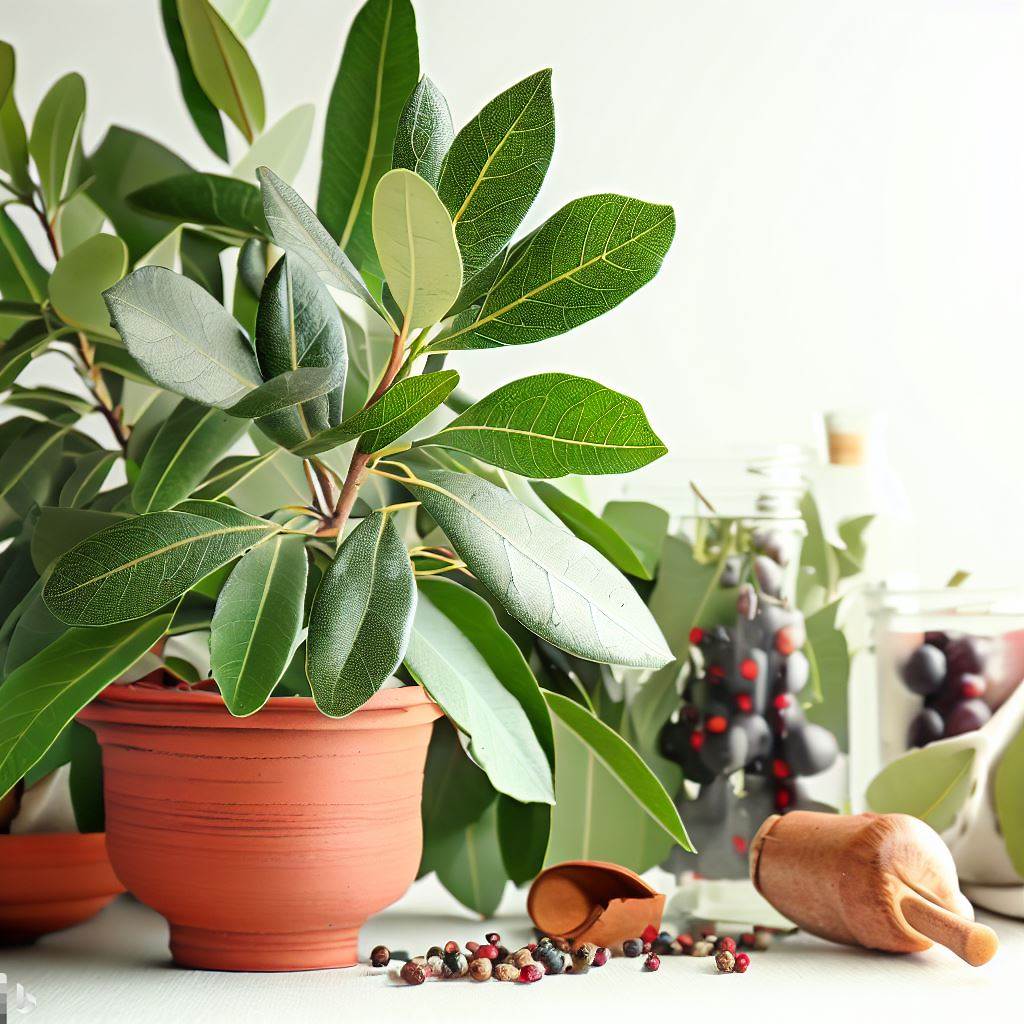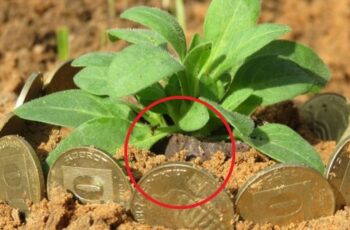Ad Blocker Detected
Our website is made possible by displaying online advertisements to our visitors. Please consider supporting us by disabling your ad blocker.
If you’re looking to enhance your home or garden, consider adding a Bay tree (Laurus nobilis) – it’s an excellent option. This evergreen plant not only adds aesthetic value to your surroundings year-round, but it also offers a practical benefit.
Bay leaves can be used as a flavoring herb in various dishes, and they have many other useful applications as well. With this versatile plant in your garden, you’ll have a source of edible yield and a natural ingredient to spice up your meals.

15 Simple Ways To Grow & Care For A Bay Tree & Bay Leaf Uses
Choosing A Bay Tree Variety For Your Garden
Typically, Bay plants are acquired as small shrubs or trees from garden centers or nurseries. Although it is possible to propagate them from seeds, this can be a time-intensive endeavor. The most prevalent cultivar of Bay is Laurus nobilis, also known as bay laurel, and it is primarily used for culinary purposes.
purchase a bay laurel tree online here
You may come across a few other types of Bay varieties as well. One such variety is Laurus nobilis ‘Aurea,’ an ornamental variant with golden-yellow leaves. Another is Laurus nobilis ‘Undulata,’ which features wavy-edged leaves. Additionally, there is a type called willow-leaved laurel, scientifically known as Laurus nobilis f. Angustifolia. While its leaves are thinner, they are still suitable for consumption.
Is a Bay Tree the Right Choice For You?

15 Simple Ways To Grow & Care For A Bay Tree & Bay Leaf Uses
Have You Got the Right Temperatures for Bay?
While Bay trees are a great option for many gardens and scenarios, it’s crucial to ensure that they are suitable for your geographical location. Typically, Bay trees are hardy down to -5 degrees Celsius (23 degrees Fahrenheit), but they can survive colder temperatures if they’re in a sheltered spot. If you reside in an area with particularly frigid winters, it may be more challenging to cultivate Bay trees. However, they usually thrive in US hardiness zones 5-9.
Is Your Garden Prone to Waterlogging?
It’s essential to keep in mind that Bay trees are intolerant of waterlogging. While Bay can be grown in various soil types, it’s crucial to ensure that they’re not waterlogged. If grown in the ground, they’ll need well-draining soil. Additionally, Bay trees can be vulnerable to damage from winter winds. Therefore, if they’re exposed to such winds, it’s best to cultivate them in a sheltered location.
Will Bay Like Your Soil?
Bay trees flourish in slightly acidic soil with a pH level comparable to other Mediterranean herbs’ preferences. If your soil is particularly alkaline, it may be more convenient to cultivate Bay trees in containers instead of on the ground.
Do You Have Space for Bay?
Unlike the majority of herbs, Bay trees grow into small trees. While they grow gradually, they can eventually reach a size of approximately 39ft x 32ft (12m x 10m). Therefore, if you intend to let it grow unpruned and unchecked, it’s worth keeping this in mind when contemplating it for your garden.
Where to Grow Bay Trees in Your Garden?
Once you’ve determined that the climate and soil conditions in your garden are suitable for Bay tree cultivation, the next step is to consider where to place your specimens. Bay trees can be utilized as individual shrubs or small trees, trimmed to form topiary or hedges, or grown in containers.
It’s advisable to select a location that receives full sun or partial shade with some dappled shade, avoiding particularly exposed areas, frost pockets, or regions prone to waterlogging. Additionally, since you’ll be using Bay leaves in your kitchen, it may be convenient to have your Bay tree located near your kitchen, allowing you to easily pluck a leaf or two as needed.
When & How To Plant A Bay Tree in Your Garden?
For optimum growth and development, it’s recommended to plant Bay saplings or young plants in the autumn or early spring, allowing them to become established before the summer heat sets in. If you intend to plant your Bay tree in the ground, the following steps should be taken:
- Prepare the planting area by adding organic matter to improve drainage in heavy soils or to enhance moisture retention in sandy, highly free-draining soils.
- Dig a hole that is as deep as the root ball of your Bay tree and roughly twice as wide to provide ample room for the roots to spread out.
- Position the Bay tree upright in the hole, and carefully fill and compact the soil around it, watering thoroughly but not excessively.
- Apply a light layer of mulch around the Bay tree to help regulate soil moisture and temperature while deterring weeds that may compete with the young plant. However, avoid heavy mulches that could retain too much water around the Bay tree.
Growing Bay in Containers

If your garden conditions aren’t suitable for growing bay trees in the ground, you can still grow them in containers. Here are some tips to help you grow a healthy bay tree in a container:
- Choose a free-draining growing medium for your container and consider adding grit to improve drainage.
- Avoid overwatering, and water only moderately.
- Apply organic liquid feed during the late spring and summer to maintain fertility.
- Replenish the compost and tease off around a third of the roots or repot the tree every couple of years.
- Protect your bay tree from the cold with fleece or bring it indoors when the temperature drops below -5 degrees C (23 F). Covering the pots with bubble wrap or other insulative materials can also help protect the roots of container plants during cold weather.
Creating Bay Topiary or Hedging
15 Simple Ways To Grow & Care For A Bay Tree & Bay Leaf Uses
Bay Topiary
To create a topiary, bay trees can be pruned and trained into a variety of interesting shapes, such as pyramids, balls, or “lollipop” standards. Some gardeners have even created ornate plaited or spiral shapes, as well as animal or mythological forms from their bay trees. During the summer months, topiary-trained bay trees should be trimmed with sharp secateurs to encourage dense growth and maintain the desired shape. When pruning, be sure to cut new shoots to a bud facing the direction of desired growth.
Bay Hedging
To maintain the shape of a bay hedge, light pruning in the summer is recommended. The number of plants required to create a solid hedge depends on how they are purchased. If you purchase bare root bay trees during winter, you should plant them in a double row with 4.5-6 plants per meter, depending on their size. For root-balled or pot-grown bays, 2-3.5 plants per meter will be required.
Pruning a Bay Shrub or a Bay Tree
For a bay shrub or tree grown as a singular specimen, minimal pruning for size and shape is typically needed, usually limited to light summer pruning. To maintain its appearance, simply trim back to a lower leaf or flower bud as necessary. While mature bay trees do not typically require much pruning, they can withstand significant pruning if needed. However, they will take a long time to recover and produce new growth. It is preferable to rejuvenate large, overgrown bays over two or three seasons in the late spring or early summer.
Watering & Feeding Bay
As previously stated, bay trees are intolerant of excessive watering, and it’s generally preferable to underwater rather than overwater them. Similar to other Mediterranean flora, bay trees can tolerate drought to some extent, although they should not be left to dry out completely. Bay plants do not need highly fertile soil, so overfeeding should be avoided. Nevertheless, providing a mild, organic plant feed every two weeks during the summer season may be helpful, particularly for container-grown plants.
Identifying Problems When Growing a Bay Tree

Problems to look out for when growing a bay tree:
Yellow Leaves: This can be a sign of overwatering or cold damage. Nutrient deficiencies may also cause this issue, especially for container-grown bay trees.
Leaf Spots:
This is usually caused by waterlogging or wet weather, which is more common for container plants. It may indicate that the compost needs to be refreshed and the plant should be re-potted.
Peeling Bark/Cracking on Lower Stems:
This is usually caused by harsh winter weather. Although it looks bad, it’s not fatal as long as the rest of the plant is growing normally. Brown Leaves: This is another sign of environmental issues. Check drainage, watering, and shelter to help revive your bay tree.
Curled Leaves with Pale-Yellow/Brown Edges:
If the leaves are curled with discolored edges, it may be a sign of a bay sucker, a little grey-white insect. Although it looks unsightly, the plant’s long-term health is usually not affected.
Remove and dispose of the affected leaves. Scale Insects:
Bay trees may be affected by soft or horse chestnut scale insects, which can be seen on leaves or stems. The plant’s growth may not be affected, but attracting or introducing predatory insects can help balance the ecosystem in your garden. Parasitoid wasps are often introduced as a biological control for soft scales.

